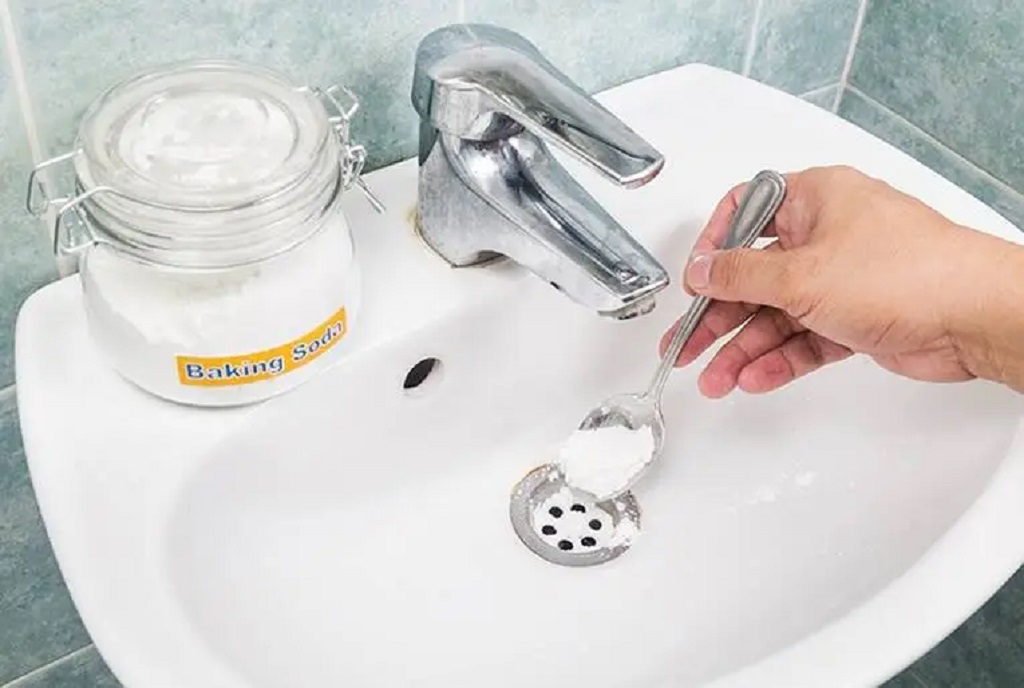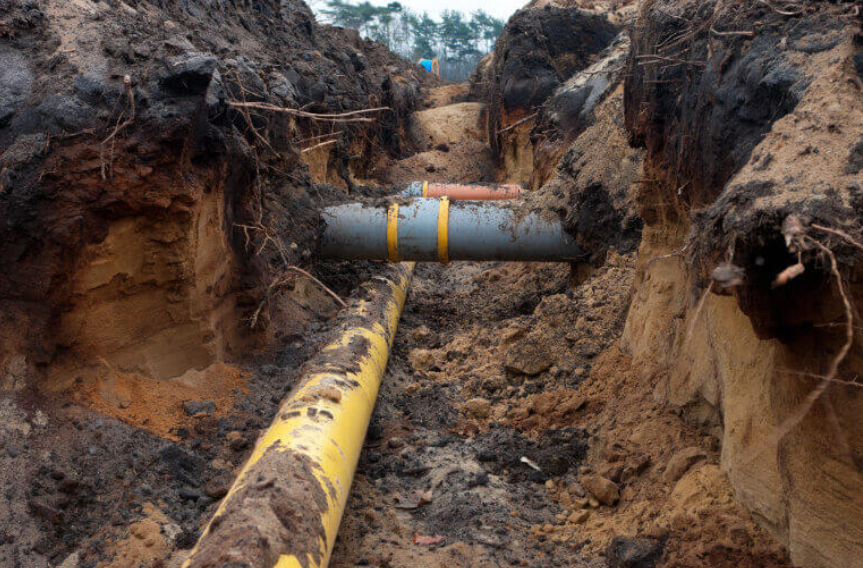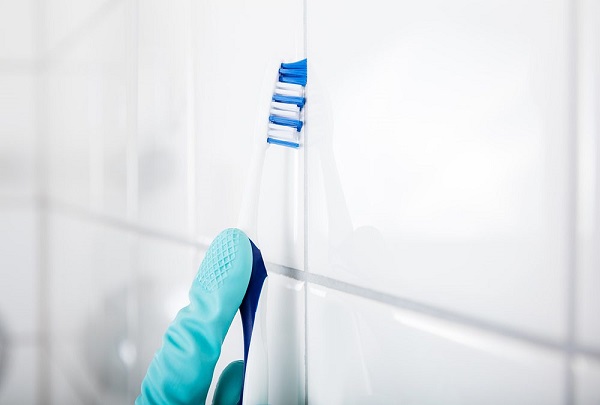When water accumulates in the sink instead of draining properly, it can be a frustrating experience. However, with the right knowledge and techniques on how to clean a bathroom sink drain, you can easily resolve the issue of a clogged sink. By identifying the root cause of the blockage, such as a buildup of hair, soap scum, or food particles, you can use specialized tools like a plunger, drain snake, or chemical drain cleaner to effectively clear the blockage and restore proper drainage. It’s important to take preventative measures, such as regular cleaning and avoiding pouring grease or oil down the drain, to avoid future clogs.
Gather Your Tools Young Padawan
Before wielding your sink plunger like a lightsaber, let’s prepare for this drain cleaning battle:
- Plunger – You’ll need a standard sink plunger with a cup that fits over the drain opening to create suction. Don’t use a flat-bottomed toilet plunger for this task!
- Baking Soda and vinegar – These common household products can work wonders to break down gunk.
- Mechanical Snake/Auger – If DIY liquid drain cleaners don’t cut it, you may need to call in the reinforcements (mechanical snake).
- Bucket – Useful for catching any gunky water overflow.
- Old Rags/Towels – Because things might get a bit messy.
- Gloves – Protect thy hands!
- Eye Protection – Safety first when dealing with drain chemicals and gunk-water splashes.
Optional extras:
- Drain Catcher/Stopper – Place over the opening to prevent future clogs.
- Funnel – For neatly pouring baking soda, vinegar, and drain cleaner products down the drain.
- Tweezers/Tongue Depressor – Helpful for pulling up stubborn clogs.
Now…are you ready to unclog that drain like a boss?
Attempt the Good Ol’ Plunger Suction Technique
Before bringing in the heavy artillery, let’s start gently with some simple suction power:
Step 1: Seal It Up
Place the plunger directly over the drain hole to form a tight seal all around. You don’t want any air sneaking in to break the suction. Apply a bit of force downward to securely seal the cup edge. Caution – don’t get too aggressive and crack your sink!
Step 2: Work That Plunger Up And Down
Time to pump this plunger like Arnold Schwarzenegger doing bicep curls! Repeatedly pull the plunger up and push it back down about 6-8 inches over the drain opening. This creates suction downward and pressure inward on the clog.
You’re essentially giving whatever gunk is stuck deep down there a good squeeze and nudge to dislodge it. Keep vigorously pumping for 2-3 minutes straight. Some serious arm work right there!
Step 3: Check Your Progress
After working that plunger and feeling the burn in your arms, fill the sink about halfway with water. If it drains normally hooray! But if it starts pooling up again, keep repeating steps 1-3 before moving on to the next approach.
Enlist Baking Soda and Vinegar

What makes baking soda and vinegar such a dream team for breaking down clogs? When combined, they undergo a fun chemical reaction that bubbles and fizzes away, releasing carbon dioxide gas. This agitation and pressure within your pipes can help dislodge the gunk.
Here’s the game plan:
Step 1: Pour Some Baking Soda In
Start by pouring about 1/2 cup baking soda down the drain. Try to coat the insides. Pro tip: Create a funnel with paper if you want to avoid making a mess.
Step 2: Splash in Vinegar
Now slowly pour about 1 to 1 1/2 cups white vinegar down the drain. For maximum fizz factor, you can microwave the vinegar for 30 seconds first to make it extra hot. Stand back – things are gonna get bubbly!
Step 3: Let Bubble Battle Commence
After a minute or so, the chemical reaction will start to kick in, bubbling and fizzing away. Just let it do its magic cleansing work for 5-10 minutes. The carbon dioxide produced will help break up dirty buildup along your pipes.
Step 4: Flush with Boiling Water
Here comes the fun part. After allowing the sink science experiment to run its course, pour a large pot of boiling water down the drain. This should help dissolve any leftover gunk and flush it further down the pipes.
Step 5: Test Your Drainage
Cross those fingers! After the bubbling show, fill up the sink with water again to check if the clog remains. If it still won’t properly drain, grab some gloves and try fishing out any lingering gunk with tweezers.
Bring in the Professional Snake
Alright, if you’ve tried all the previous home remedies with no victory, it’s time to tag in the mechanical snake (aka drain auger). You can rent this handy electric power tool from your local hardware store.
Step 1: Read Instructions Carefully
Since you’ll be dealing with both electricity and spinning metal near lots of water, carefully read the usage instructions first. Don’t get dip your snake in before knowing how to handle it!
Step 2: Feed in the Snake
With the water drained from your sink, carefully insert the mechanical snake down into the opening, feeding steadily. Once you hit resistance from the clog, the rotating metal coil at the tip will work to snag and break up the gunk.
Step 3: Pull Back Out Slowly
After letting the snake churn away for a few minutes, slowly retract it from the drain while continuing to rotate. This will help scrape more gunk loose as you extract it.
Step 4: Repeat and Clean Off Gunk
You may need to insert and remove the snake several times to fully power through that stubborn blockage. Also remember to wipe any loose debris off the snake coils in between inserting.
Step 5: Remove Drain Catcher/Stopper
After clearing the clog with the mechanical snake, use tongs to remove any drain catcher or stopper at the bottom, which could have some leftover gunk on it. Remove all that bad stuff!
Step 6: Flush with Boiling Water
One final flush with boiling water should help clear out any small leftover particles before you test your drainage. Cross your fingers and dump a bucket of hot water in!
Prevent Future Clogs
Whew, unclogging drains is hard work! Here are some tips to stop clogs before they start forming again:
- Install drain catchers to trap hair and debris before it heads down your pipes. Just remember to clean them out!
- Every few months pour a pot of boiling water down the drain to help dissolve built up gunky deposits.
- Limit pouring fats/oils down the drain which can solidify into nasty clogs.
- Be mindful of what you’re washing down – excess food bits and hair can pile up!
And if a clog does rear its ugly head again someday, at least now you know a few pro tricks for tackling it. Put up your fighting fists, and get back to unclogging like a champ!
FAQs
Should I use a chemical drain cleaner?
Chemical drain cleaners with harsh ingredients like sulfuric acid or lye can help dissolve gunk and clogs. However they also come with safety risks if mishandled, so should be a last resort after trying other methods. And never mix chemical cleaners as toxic fumes can occur.
When should I call a plumber for help?
If you’ve thoroughly tried all the at-home clog clearing tricks (plunger, baking soda/vinegar, mechanical snake, etc.) with zero success, it may be time to call in a professional plumber. A zone rooter machine is more powerful than tools available to consumers and can dislodge very stubborn clogs 20-30 feet down your pipes.
Why does my sink keep getting clogged up?
Frequent clogs usually come down to a problem area within the pipes where debris, hair, grease, and soap scum tend to collect and accumulate over time. Using a drain catcher and being mindful of what goes down the sink can help prevent excessive build up leading to recurring clogs.
What can I use if I don’t have a plunger or mechanical snake?
Don’t lose hope if you don’t have a plunger on hand! You can create suction using a small bucket or pot lid pressed tightly over the drain opening. Add some dish soap and boiling water before sealing the lid in place for several minutes. The pressure can help dislodge the clog.
How do I unscrew my drain catch to clean it?
Most sink drain catchers or stoppers screw into place for easy removal cleaning. Place tongs or pliers over the edges, then turn counterclockwise to loosen and lift out. Clean off hair and gunk before replacing and screwing clockwise to reattach the hand tight only. Take care not to strip the screws or plastic stopper threads.
In Summary
When faced with a bathroom sink clog situation, don’t panic! Arm yourself with the right gear, take a deep breath, roll up those sleeves, and work your way through these unclogging techniques step-by-step:
- Create a tight seal with a sink plunger and work it vigorously up and down over the drain.
- Mix up a bubbling science experiment with baking soda, hot vinegar, and boiling water to break up gunk inside.
- If DIY options fail, bring in a mechanical drain snake from your hardware store to churn through stubborn sludge clogging your pipes.
- Install drain catchers and regularly pour boiling water down your sink to prevent future clogs before they start!
With some determination and a few cleaning products from under your sink, you can take back control of that super annoying clogged drain. Godspeed my friend! Now get your hands dirty and let unclogging victory be yours!




